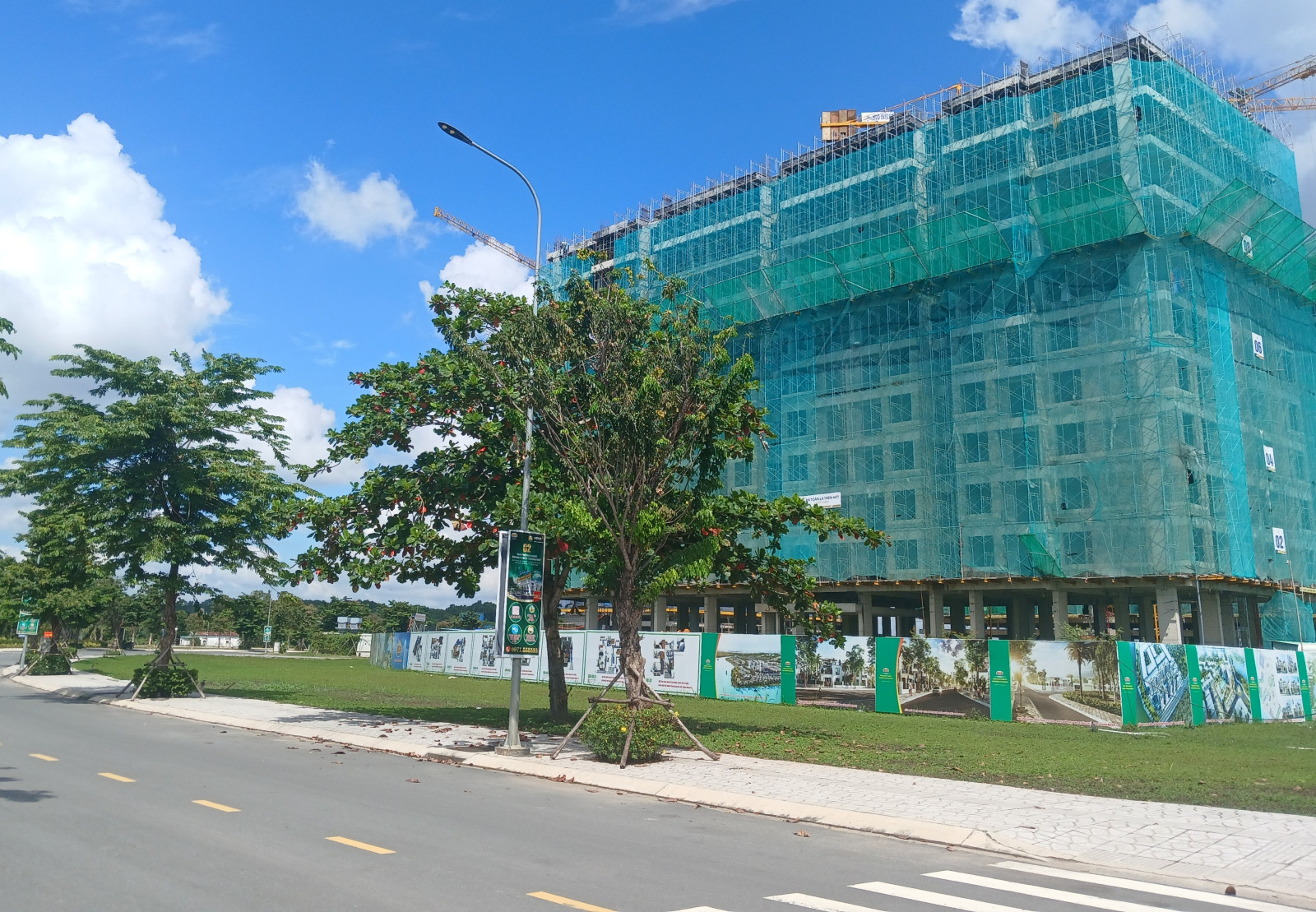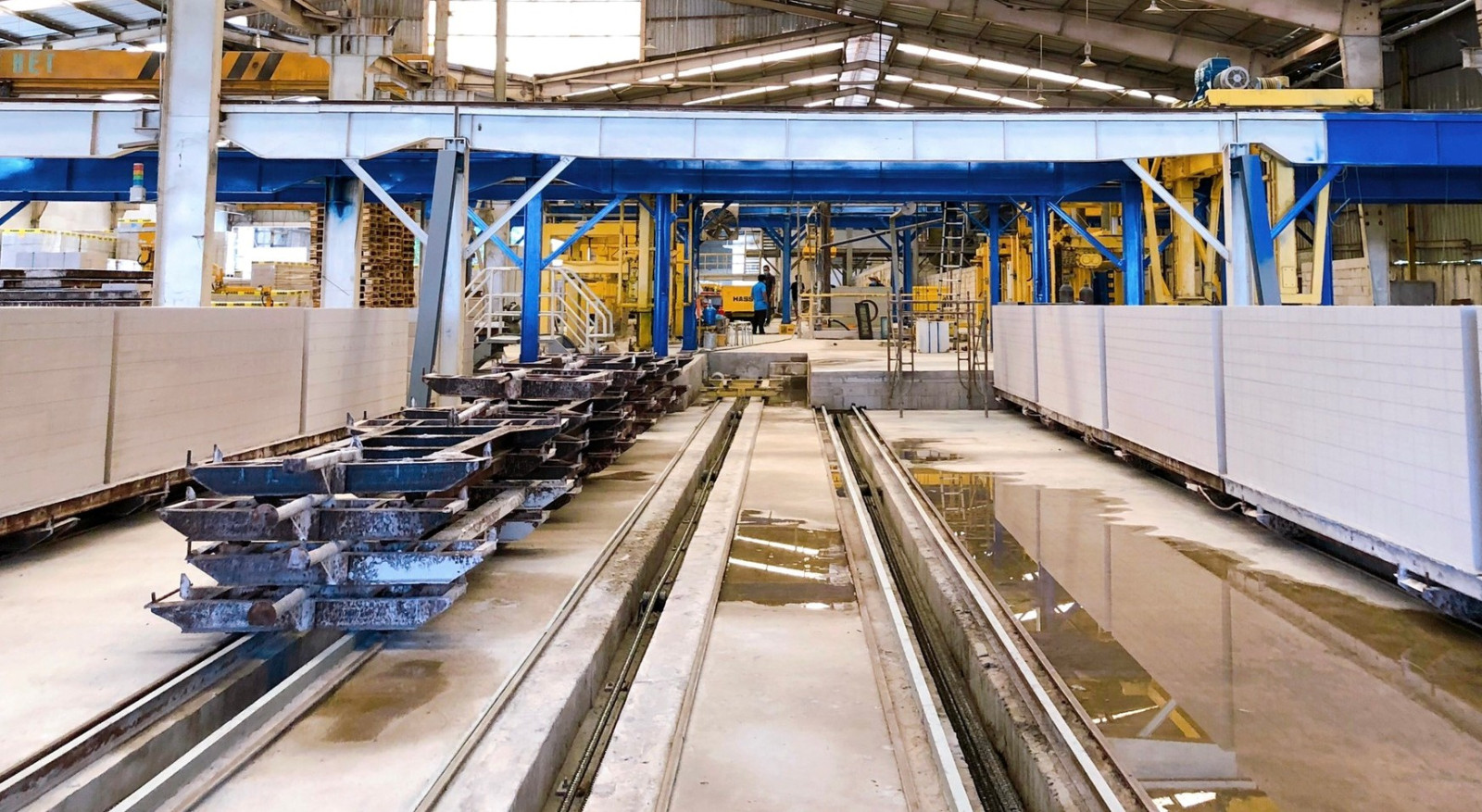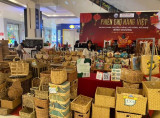Sector of material supplies accelerated in green transformation
Up to now, the urbanization rate in Binh Duong has reached 85%. It is worth noting that the urbanization process in Binh Duong is being oriented towards sustainable development.

Large projects in the province are using non-fired materials. In the photo is An Sinh Residential Area Project - Chanh My Ecological Urban Area
Urgent demands
According to statistics from the Ministry of Construction, construction projects nationwide are generating 33% of carbon emissions and 40% of solid waste, leading to environmental impacts from dust pollution and difficult-to-recycle construction waste. In addition, currently, the supply of mineral resources for the construction industry and the production of construction materials is increasingly depleted, posing challenges for the investment process in infrastructure projects.
Therefore, the development of alternative materials, green materials to minimize resource exploitation, minerals, increase environmental protection requirements, reduce greenhouse gas emissions. This is both a necessary trend and a target of the construction and building materials industry in Vietnam, aiming to achieve a net zero emissions target by 2050 as committed by the Prime Minister at the 26th Conference of the Parties to the United Nations Framework Convention on Climate Change (COP26).
Currently, there are many non-fired brick manufacturing companies and factories in the province, such as VietCem Joint Stock Company, HASS Joint Stock Company, Biconsi Construction Materials Joint Stock Company, and Phuoc Phu Thanh Limited Liability Company. Mr. Le Kim Giau, General Director of HASS Joint Stock Company (Thạnh Phước Ward, Tan Uyen City), said that HASS has equipped with modern production technology from Germany with a total investment capital of 400 billion VND, and a capacity of 200,000m3/year. Currently, the company's products are consumed in the domestic market and exportation.
Concurrently, the departments, committees, sectors, and project investors of construction projects in the province shall strictly implement the directive of the Provincial People's Committee on enhancing the production and use of non-fired construction materials to replace fired clay bricks in the province in accordance with the regulations of the Government, ensuring that by 2025, in urban areas from type III and above, at least 80% of non-fired construction materials are used.
Besides the projects using non-fired bricks from public investment capital, large urban projects being implemented in the province such as Sycamore project, An Sinh residential area - Chanh My ecological urban area (Thu Dau Mot city) etc. during the construction process have used cement bricks, aerated concrete bricks with a usage rate of 80-85% compared to the total construction volume. These are encouraging signals in the development of non-fired materials in the province.
Tangling obstacles removed under coordination
Besides the achieved results, the evaluation of the functional agencies shows that the green transformation process in the construction sector still has shortcomings and is not evenly distributed between individual residential areas and large projects of organizations and enterprises. If in public investment projects, large constructions have used green materials, then in individual constructions of residents, they are still modest, mainly because the cost of green materials is higher than conventional materials. In addition, the skilled workforce using specialized tools to ensure technical and artistic requirements is lacking; special types of mortar for construction and plastering increase construction costs, making it difficult to compete with traditional fired bricks.
The difficulty lies in the fact that the current production equipment and machinery of construction material manufacturing companies are imported from Germany, South Korea, Spain, and Japan with high initial costs, causing many businesses to face financial difficulties in balancing their finances for investment in expanding production, increasing output, and ultimately reducing the cost of products to serve the general public. According to Mr. Le Kim Giau, investing in a non-fired brick production plant requires a considerable amount of financial resources. Meanwhile, the State does not have specific mechanisms to support capital for businesses investing in this field, which is also a significant pressure if using borrowed capital.

Production of non-fired bricks is seen at HASS Joint Stock Company.
In order to promote the strong transformation of Vietnam's construction materials industry towards greenization in general and the stability of the non-fired construction materials production sector in particular, relevant authorities need to research and issue complete standards and technical regulations related to green construction materials that are environmentally friendly, providing a basis for enterprises and project investors to apply during the production process.
Moreover, it is necessary to promote information and communication activities about green building materials to change the perception of stakeholders involved in the construction investment sector. At the same time, the State needs to have specific policies to encourage and support businesses investing in green materials in general; businesses need to actively connect and share research to find solutions to further reduce the cost of green building materials, in order to compete well in the international market.
Decision No. 2171/QD-TTg dated December 23, 2021, approved by the Prime Minister of the Government, approves the Program for the Development of Non-fired Building Materials in Vietnam until 2030, aiming to promote the production and use of non-fired brick materials to replace fired clay bricks. Specifically, non-fired bricks will replace a portion of fired clay bricks at a rate of 35-40% by 2025 and 40-45% by 2030 in the total amount of construction materials.
Reported by Tuan Anh – Translated by Vi Bao
 Coordination programs are guaranteed to be practical and effective
Coordination programs are guaranteed to be practical and effective
 ENTERPRISES LISTED IN THE GREEN BOOK: Role models on sustainable environmental protection
ENTERPRISES LISTED IN THE GREEN BOOK: Role models on sustainable environmental protection
 Binh Duong-Yamaguchi (Japan): Ten-year connection
Binh Duong-Yamaguchi (Japan): Ten-year connection
 Binh Duong-Ymaguchi (Japan): Ten-year connection
Binh Duong-Ymaguchi (Japan): Ten-year connection
 Binh Duong - Yamaguchi (Japan): Ten-year connection
Binh Duong - Yamaguchi (Japan): Ten-year connection
 The driving force incurred by major constructions
The driving force incurred by major constructions
 Vietnam needs 14 billion USD to develop EV charging stations
Vietnam needs 14 billion USD to develop EV charging stations
 Bright prospects in exports
Bright prospects in exports
 Focus on infrastructure development increases investment attraction
Focus on infrastructure development increases investment attraction
 Today (December 11), the conference to announce the Construction Planning of Phu Giao District until 2040 took place
Today (December 11), the conference to announce the Construction Planning of Phu Giao District until 2040 took place






